Estadio La Cartuja
| Capacity | 70 000 |
|---|---|
| Country | Spain |
| City | Seville |
| Clubs | – |
| Category | Design implemented |
| Cost | €15 M ($15.7 M) |
| Construction | 07/2024 – 04/2025 |
Advertisement
Estadio La Cartuja – design description
How does the Estadio La Cartuja reconstruction project look in a nutshell?
The main idea behind the redevelopment of Estadio La Cartuja was to eliminate the athletics track, lower the pitch, and bring the stands closer to the playing field by building additional lower sections of the auditorium, increasing the stadium's capacity to almost 70,000 seats.
Plans to rebuild the stadium emerged after Spain was announced as co-host of the 2030 World Cup (Estadio La Cartuja is to be one of the venues for the tournament).
Construction work began in July 2024 and was completed shortly before the Copa del Rey final, scheduled for April 26, 2025. Although the upgrade changed the look of the facility quite significantly, its cost was surprisingly low (€15 million).
Going forward, a second phase of work is already planned, which will consume considerably more money (€100 million) and will include, among other things, enlarging the roof, renovating the facade and stadium premises, and replacing old seats.
What did Estadio La Cartuja look like before the reconstruction?
Estadio La Cartuja was opened in 1999. The facility was built with public money, and the main impetus for the construction was the desire to have Seville compete to host the Olympic Games (the city applied for the games in 2004 and 2008, but unsuccessfully each time).
The facility was built on the northern outskirts of the city. The stadium was equipped with an athletics track, and with a capacity of 57,629 was among the largest in Spain. In addition to Estadio La Cartuja, there were two other large stadiums in Seville – owned by Betis (Estadio Benito Villamarín) and Sevilla FC (Estadio Ramón Sánchez-Pizjuán).
Both Betis and Sevilla FC preferred to play at their own venues, so Estadio La Cartuja did not have a permanent host. However, the facility has had the opportunity to host significant sporting events, such as the Athletics World Championships (1999), the UEFA Cup final (2003), Spanish national team matches, Copa del Rey finals and Euro 2020 games. The stadium has also hosted a lot of cultural events.
Did Estadio La Cartuja need an athletics track?
The stadium rarely hosted athletic competitions, so the athletics track was often seen as a shortcoming. In 2018, visualizations by Atienza Design became popular in the media, which suggested eliminating the track and changing the layout of the stands to a football-specific one. The facility would become the new home of Sevilla FC after the redevelopment, but the club quickly dismissed the reports, saying it was not working on similar plans.
Will Estadio La Cartuja be one of the venues for the 2030 World Cup?
Estadio La Cartuja has been proposed as one of the venues for the 2030 World Cup, with FIFA announcing on October 4, 2023 that the event would be held in Spain, as well as Portugal and Morocco (which were also joined by Uruguay, Argentina and Paraguay, where one game each will be played at the start of the tournament).
Estadio La Cartuja was one of the more certain candidates to be on the list of stadiums for the World Cup, and was eventually declared as one of the venues for the tournament.
When did plans for the redevelopment of Estadio La Cartuja emerge?
In November 2023, news broke that plans were being made to redevelop Estadio La Cartuja in conjunction with the World Cup. The facility, as in the 2018 proposal, would lose the athletics track and gain a football-specific layout of the stands. With the addition of new rows, its capacity would increase to around 70,000 spectators.
On March 14, 2024, Andalusia's president, Juanma Moreno, unveiled renderings showing the appearance of Estadio La Cartuja after the reconstruction (updated plans for the reconstruction of the other Andalusian World Cup candidate, Estadio La Rosaleda, were also shown on the occasion).
What does the Estadio La Cartuja reconstruction concept entail?
The most important change is the removal of the athletics track, lowering the pitch and building additional stands in the lower part, closer to the playing field. The expansion of the stands was to increase their capacity to around 70,000 people.
Despite the loss of the athletics function, it will be possible to temporarily install a track if necessary, as was done, for example, at Hampden Park on the occasion of the 2014 Commonwealth Games.
The conversion to a football-specific stadium was envisioned as part of the first phase of the project. Despite the rather significant change of the character of the stadium, its cost is relatively low (€15 million).
What changes are to take place at Estadio La Cartuja in the second phase of redevelopment?
In addition to the removal of the running track and the construction of additional stands, the plan calls for a number of other works to be carried out. The stadium's facade is to be renovated, and significant changes will be made to the exterior, especially in the corners.
In addition, the roof area is also to be increased by adding a new glazed section on the inside. The entrances and rooms in the stadium are also to undergo renovation, and old seats will also need to be replaced. The cost of these works is estimated at €100 million.
When will the reconstruction of Estadio La Cartuja be carried out?
Phase I of the reconstruction of Estadio La Cartuja (removal of the running track and construction of additional bleachers in the lower part) began in July 2024, with work completed shortly before the Copa del Rey final, which was scheduled for April 26, 2025.
When will the second phase of the Estadio La Cartuja reconstruction be carried out?
As two of Sevilla's biggest clubs, Betis and Sevilla FC, are planning to rebuild their own stadiums, they are expected to temporarily play at Estadio La Cartuja, which will make the work more difficult, so most of it will only be carried out after the clubs return to their respective venues – but before the 2030 World Cup.
A report on the reconstruction of Estadio La Cartuja can be seen on a separate subpage
What does the reconstruction of Estadio La Cartuja have to do with Betis' plans?
Plans for Estadio La Cartuja conflicted with the previously announced project to rebuild Estadio Benito Villamarín. Betis was planning to begin modernizing its stadium in the summer of 2024, and as a result was set to move to La Cartuja for two years. Since the redevelopment of La Cartuja was now scheduled, Betis announced a postponement of the work at its facility (it will be carried out between 2025 and 2027).
What other stadium projects are underway in Seville and throughout Spain?
The redevelopment of Estadio La Cartuja is one of three major stadium projects to be carried out in Seville in the near future (in addition to the redevelopment of Betis' stadium, Sevilla FC is also planning to build a new stadium on the site of the existing Estadio Ramón Sánchez-Pizjuán).
The project is also part of the boom in stadium investment seen in Spain, especially in connection with preparations for the World Cup and thanks to an agreement between LaLiga and the CVC Capital Partners fund.
What will the redevelopment of Estadio La Cartuja accomplish?
The redevelopment will change the character of the stadium to that of a footbal-specific one, increase its capacity and raise its standard, making it a more attractive venue for matches and cultural events.
The modernization will prepare the facility for the 2030 World Cup matches, and the stadium will also have the chance to become a permanent venue for the Copa del Rey finals and host the Spanish national team more often (some plans even call for it to have a status of a national stadium).
The facility will still not have a permanent host, however, although due to the redevelopment of their own facilities, both Betis and Sevilla FC plan to play at La Cartuja temporarily in the near future, and the changes being prepared also take into account their needs.
Advertisement
Renderings

2024 © Junta de Andalucía 
2024 © Junta de Andalucía
Related news
2025
-
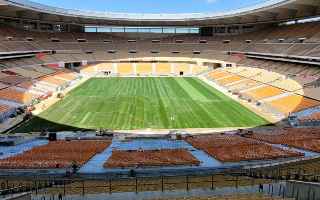
Spain: La Cartuja ready for Barça and Real
Just in time. Two weeks before the Spanish Cup final, in which Real Madrid and FC Barcelona will fight for the trophy, workmen have finished installing the turf at Estadio La Cartuja. With this, Seville's Olympic Stadium has officially ceased to be... an olympic stadium.
-
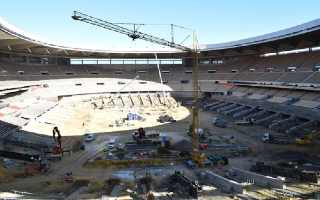
Spain: No athletics track at La Cartuja! New stands soon
Estadio de la Cartuja is undergoing a major upgrade that will dramatically change its functionality. The removal of the athletics track and the construction of new stands will bring fans closer to the action on the pitch, and the whole thing prepares the stadium for upcoming sporting events.
2024
-
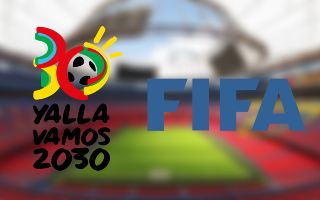
FIFA: World Cup 2030 stadium evaluation. Camp Nou in the lead
Of the 23 stadiums to host the 2030 World Cup matches, as many as 14 either exist only on paper or will undergo deep redevelopment before the tournament. Nevertheless, FIFA has evaluated each of them before the Extraordinary Congress, which will already make its final decision on December 11. Also the one about the final arena.
-
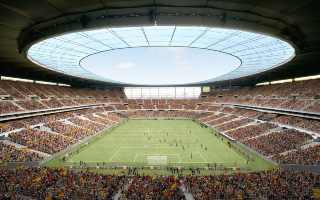
Spain: Work begins on second phase of Estadio La Cartuja expansion
Estadio La Cartuja enters its second phase of expansion, with seating capacity increasing to just over 70,000, making it the third-largest stadium in Spain after Santiago Bernabéu and Camp Nou.
-
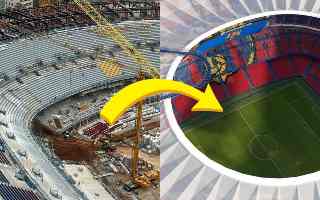
Spain: Wave of stadium upgrades sweeps through the Iberian Peninsula
In recent years, work on Spanish stadiums has not stopped, and the 2030 World Cup has provided another important impetus for the renovation of facilities. With work on the Bernabéu, Camp Nou and Balaídos already underway, 9 La Liga venues are awaiting their turn. Rosaleda, Romareda, Riazor and La Cartuja join the group as 2030 World Cup hosts.
-
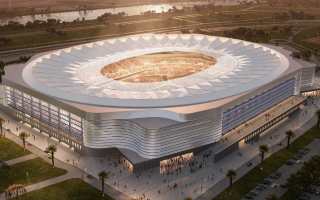
Spain: First phase of Olympic stadium upgrade has begun in Seville
Work on the modernisation of La Cartuja in Seville is gathering pace. The first phase of the project, which aims to increase its capacity to 70,000 seats, will be completed next April. The plan is expected to bring Andalusia's dream of hosting the 2030 World Cup a step closer.
-
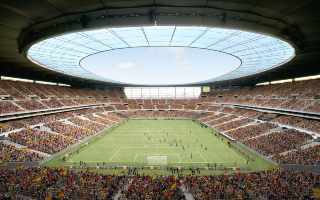
Spain: Changes around Estadio La Cartuja in Seville
Both the Seville City Council and the Government of Andalusia have decided to significantly upgrade the infrastructure around Estadio de la Cartuja. The main aim is to improve access to the arena and provide a better environment for visitors. To this end, a new car park and better road links will be created.
-

World Cup 2030: Spain selected 11 stadiums. Which ones are missing?
By July 31, Spain will present to FIFA the stadiums that, along with venues in Morocco and Portugal, will be part of the 2030 World Cup. The idea of proposing as many as 13 arenas was rejected, and ultimately, only eleven will be presented.
-

Spain: Preparations for renovation of La Cartuja. Venue worthy of 2030 World Cup?
The City Council has issued a permit for the redevelopment of La Cartuja into a five-star football stadium. The Urban Planning Board has also granted the necessary license, so construction will begin soon. The redevelopment will be carried out in two phases. What exactly will change?
-

Spain: La Cartuja with a facelift. Both clubs from Seville will benefit
The Olympic stadium ‘on the island’ will be rebuilt. Work will start imminently and the beneficiaries of this decision will not only be Real Betis and Sevilla FC, but also the Andalusian city itself. How much will La Cartuja change?
-

Spain: Andalusia prepares for World Cup
Juanma Moreno, President of the Junta de Andalucía, the Regional Government of Andalusia, presented the latest visualization of the renovated La Cartuja stadium via social media. All this in preparation for the venue to become a host for several matches during the 2030 FIFA World Cup. What exactly will change?
 StadiumDB
StadiumDB